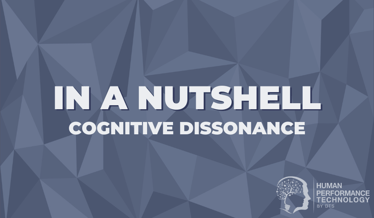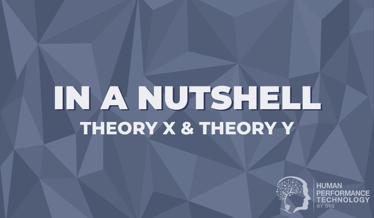In a Nutshell: DISC Model of Human Behaviour
The theoretical foundations of the DISC theory were created by Harvard educated Psychologist Dr. William Moulton Marston, published in his 1928 book, “Emotions of Normal People,” originally using the terms Dominance, Inducement, Submission, Compliance.As an interesting aside, Marston was also the original inventor of the first lie detector as well as the comic book character Wonder Woman.
The lineage of the DISC theory can be traced back thousands of years to ancient times. Hippocrates was an ancient Greek physician, often referred to as the father of Western medicine, who proposed the four temperaments, also known as the four humours:
- Yellow bile: Choleric (a dominant, head-strong, ambitious doer; prone to being bad-tempered)
- Blood: Sanguine (a socially-oriented, energetic talker; prone to being cheerful)
- Phlegm: Phlegmatic (a self-content, stable and calm temperament; prone to being peaceful)
- Black bile: Melancholic (a thoughtful ponderer; prone to being pessimistic)
Since Marston’s time, many individual psychologists and businesses have created instruments designed to measure the four factors for a variety of commercial applications. The first DISC instrument (paper questionnaire) based on Marston’s work was created by Walter V. Clarke in 1942 called “Activity Vector Analysis,” and the first computerised version (online questionnaire) was created by Bill Bonstetter from TTI Success Insights in 1984 called “Style Insights.”
Today, DISC is estimated to be in use by 75% of Fortune 500 companies. The questionnaire (paper or online) is taken by millions of people every year, making it one of the most popular psychometric assessments in the world. The practical applications of DISC in the organisational setting are numerous and some of the most common include team building, communication, leadership development, sales, customer service, coaching, conflict resolution, induction, and pre-employment selection.
Overview:
DISC is an acronym for a type of psychometric assessment that measures observable human behaviour — specifically, the four most common groupings of behavioural tendencies found in people all over the world. In other words, DISC measures how people prefer to act and communicate. The overall preference that one has for these four factors is referred to as one’s behavioural “style."
A basic outline of the DISC model can be viewed as follows:
D: Dominance: outgoing and task focused.
Common tendencies:
- High D's are often described as: Demanding, Driving, Ambitious, Pioneering, Strong-Willed, Forceful, Determined, Aggressive, Competitive, Decisive, Venturesome.
- Low D's are often described as: Conservative, Calculating, Cooperative, Hesitant, Low-Keyed, Unsure, Undemanding, Cautious, Mild, Agreeable, Modest, Peaceful, Unobtrusive.
I: Influence: outgoing and people focused.
Common tendencies:
- High I's are often described as: Effusive, Ongoing, Magnetic, Enthusiastic, Demonstrative, Persuasive, Warm, Convincing, Optimistic, Trusting, Sociable.
- Low I's are often described as: Reflective, Factual, Calculating, Sceptical, Logical, Suspicious, Matter-of-Fact, Incisive, Pessimistic, Moody, Critical.
S: Steadiness: reserved and people focused.
Common tendencies:
- High S's are often described as: Phlegmatic, Relaxed, Non-demonstrative, Passive, Patient, Predictable, Consistent, Deliberate, Steady, Stable.
- Low S's are often described as: Mobile, Active, Restless, Alert, Variety-Oriented, Demonstrative, Impatient, Pressure-Oriented, Eager, Flexible, Impulsive, Impetuous, Hyper-tense.
C: Compliance: reserved and task focused.
Common tendencies:
- High C's are often described as: Evasive, Worrisome, Careful, Cautious, Conventional, Exacting, Neat, Systematic, Diplomatic, Accurate, Tactful.
- Low C's are often described as: Firm, Independent, Self-Willed, Stubborn, Obstinate, Opinionated, Unsystematic, Self-Righteous, Uninhibited, Arbitrary, Careless with Details.
Most people will have a clear preference for one or two of the four DISC behaviours over the others. In many cases, this natural preference will be formed at a young age and remain relatively stable throughout their lifetime, however people can and do adjust their preferred style at any given time in order to succeed or survive in their environment. In this way, people can be seen as having two distinct behavioural styles: a natural style (e.g., when at home), and an adapted style (e.g., when at work). Usually, these two graphs are provided for side-by-side comparison in a DISC profile.
When we adapt or change our natural behaviour, it requires energy, which can lead to stress or burnout if done so over a prolonged stretch of time. For example, someone with a "high I" and a "low C" may be perfectly capable of analysing financial data because of their intelligence, expertise and education, however they may feel worn out if forced to spend hours on end working with detailed excel formulas. It's not that these styles can't do detail — but rather they would prefer less detail and more human interaction in their work.
Something to bear in mind when using DISC is that there is no such thing as a “good” or “bad” score on the assessment or a “best” or “worst” style. Each factor has its own unique strengths and limitations. One of the most common errors people make when using DISC for the first time is assuming that a particular profile will tell them who will succeed or fail in a job. DISC only measures common behavioural tendencies — not skills. DISC does not predict job success, so there is no such thing as a "best" profile for an accountant, salesperson, nurse, engineer or entrepreneur. Any type of DISC style can succeed in any type of profession. It's important to remember that DISC is only one part of the picture and there are many other elements that affect job performance.
Another point worth stressing about DISC is the fact that it explores four traits within our personality, but the term "personality" is an all-encompassing word that goes far beyond the scope of four DISC behavioural traits. DISC is a behavioural assessment, not a personality test. Personality is much more than our behaviour alone and includes things like our values, beliefs, sense of humour, character, ethics, temperament, emotional maturity, thinking preferences and manner of communicating. DISC is not a complete measure of who we are, but simply one aspect of what makes us unique: how we prefer to act and communicate (or behavioural style).
Ultimately, the DISC framework provides a common language to help people understand and articulate their own natural preferences, others’ natural preferences, as well as how to best adapt to others in order to be more effective in a range of situations.
This article offers an expanded description of the summary listed in our post 40 Must-Know HR, OD, L&D Models.

Theo Winter
Client Services Manager, Writer & Researcher. Theo is one of the youngest professionals in the world to earn an accreditation in TTI Success Insight's suite of psychometric assessments. For more than a decade, he worked with hundreds of HR, L&D and OD professionals and consultants to improve engagement, performance and emotional intelligence of leaders and their teams. He authored the book "40 Must-Know Business Models for People Leaders."



We Would Like to Hear From You (0 Comments)